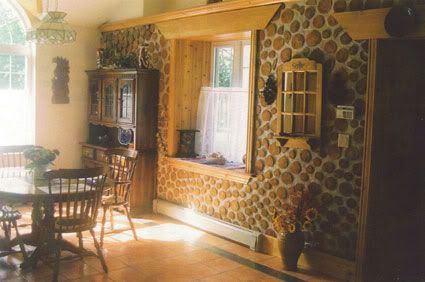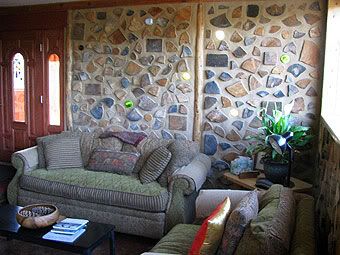Posted By: mo
infill procedures - 03/12/09 10:37 PM
Hello everyone,
Looking for information on how you would infill a frame. I guess that different cohesive materials are going to be installed differently. I really know nothing on this and would like to learn.
If anyone has examples of procedures for cellulose, clay-woodchip, brick, whatever; please explain if you have time or point to a good source if you could.
I would think it is also important that the frame in these scenarios must be the stand-alone structure. If there are infills that this is not required a side note would be helpful.
Thanks in advance,
Mo
Posted By: bmike
Re: infill procedures - 03/12/09 11:33 PM
you should check in with chris and will dancey up on the north side of lake erie in canada... they should be in the TFG directory - they make it to most conferences as will and chris run the NA side of dietrich's.
they did a great hemp / clay hemp / lime infill on their round house. came up with some very smart details. will has experience from germany - and adapted the techniques to their location and materials. wall timbers are visible on the exterior, roof timbers to the interior. quite lovely. and their test building, a small guest cottage, has a wonderful living roof.
Posted By: TIMBEAL
Re: infill procedures - 03/13/09 11:18 AM
Mo, are you planning to infill a building? Give some details. I am picking from a couple of books / sources. Fox Maple, and the work of Frank Anderson, from Germany, he was sent back home after his paper work expired. I don't know what happen after that, a miss use of the system for sure.
I am also using, Serious Straw Bale, by Paul Lacincki and Michel Bergeron. Although I am not planning to use straw, it is not readily available in high quality, so I am using wood chips, I have that ability, on site, chipper and wood.
There are numerous web sites to visit via search engines. I would also like more options.
One aspect I am having trouble with is the way around the making of clay slip. It is recommended to use a dry power mixed with water. This makes for a long process, drying and crushing, pounding the clay into a power. It is my suspicion the raw wet clay can be wiped into a slip with out drying it. That would be my first choice. Quality of clay is the next issue, the higher percentage the better the clay. If I dig it out of the ground I must determine it %'age and working quality, it stickiness. These are the unknowns for me. And you can buy it in the bag, 100% clay, but that moves from my first goal of localism. I am willing to experiment, and use others experience to reach my goal.
Tim
Posted By: bmike
Re: infill procedures - 03/13/09 12:23 PM
Another good source is Paula Baker LaPorte and her husband Robert of
EcoNest The books listed by Tim are good references too...
Posted By: OurBarns1
Re: infill procedures - 03/13/09 02:00 PM
I really like the looks of cordwood infill. Rob Roy has written a couple books on this method.
http://www.amazon.com/Cordwood-Building-...2705&sr=8-1Supposedly softwood gives the best results. Hardwood checks too much.
The wall in the last photo has wine bottles interspersed for a neat effect...
This might be a way to employ timber cut-offs, too...could just do an interior wall to get the feel of it...



This clay material is basically straightforward stuff once you get a handle on the composition and that is a matter of experimenting with it weather you buy a pre-mixture, fabricated product or dig it out of your backyard. I have made it up with many different constituents. Depending on application I'll throw about anything in there including cow dung, hemp fiber, flax, straw, linseed oil, lime, pine tar, blood, piss, horse hair, glue, milk, eggs. Critical is the amount it's going to shrink when it dries and so the aggregate is the crucial factor. That is, the amount of sand for example.


